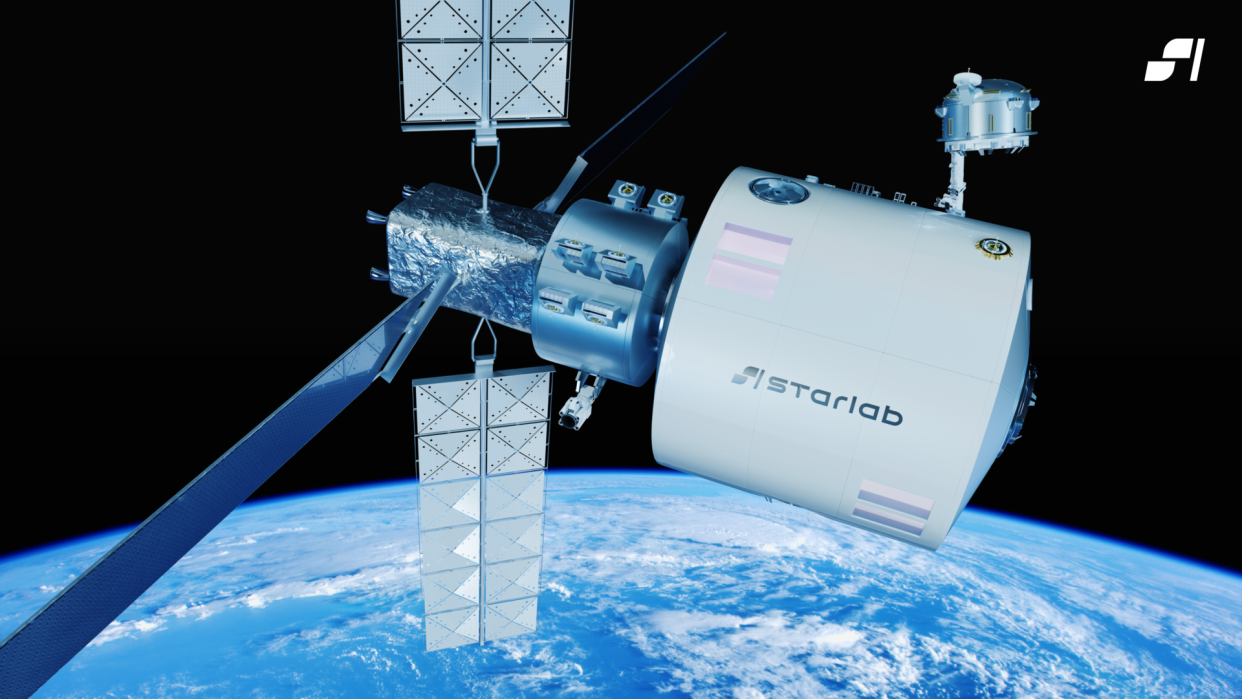SpaceX's Starship to launch 'Starlab' private space station in late 2020s

The stars were aligned for this launch deal.
The team behind the Starlab private space station project announced today (Jan. 31) that it has selected SpaceX's giant Starship rocket to get its outpost off the ground.
"SpaceX's history of success and reliability led our team to select Starship to orbit Starlab," Dylan Taylor, chairman and CEO of Voyager Space, said in a statement. "SpaceX is the unmatched leader for high-cadence launches, and we are proud Starlab will be launched to orbit in a single flight by Starship."
Today's announcement didn't give a target launch date. But NASA and Starlab's developers want the four-person commercial station to be up and running before 2030, when the International Space Station (ISS) is expected to cease operations (though that retirement date is apparently not set in stone).
Related: Meet Starlab: Private space station planned to fly in the late 2020s
Indeed, NASA has been encouraging the development of private outposts for several years now, so its astronauts will continue to have somewhere to live and work in low Earth orbit after the ISS is gone.
In December 2021, the agency announced it was awarding a total of $415 million to three different companies — Blue Origin, Nanoracks (which is part of Voyager Space) and Northrop Grumman — to help mature their commercial space station concepts. NASA also holds a separate agreement with Houston company Axiom Space, which is working on its own private outpost.
Things have changed a bit since then. For example, Northrop Grumman decided to cease work on its station and join the Voyager Space team, which also brought European aerospace giant Airbus on board. Voyager and Airbus formed a joint venture called Starlab Space LLC, which will build and operate the Starlab station. (The Blue Origin-led team continues to develop its outpost concept, called Orbital Reef.)
RELATED STORIES:
— Hilton hotels will design astronaut suites on private Starlab space station
— NASA looks to private outposts to build on International Space Station's legacy
— NASA working to get private space stations up and running before ISS retires in 2030
Starship is SpaceX's next-generation transportation system, which the company is developing to help humanity settle the moon and Mars. The vehicle has launched twice to date, on test flights in April 2023 and November 2023 from SpaceX's Starbase site in South Texas.
The 400-foot-tall (122 meters) Starship is the biggest and most powerful rocket ever built, capable of hauling up to 150 tons to low Earth orbit. It will send the fully outfitted Starlab up in just one launch, as Taylor noted above.
"Starlab's single-launch solution continues to demonstrate not only what is possible, but how the future of commercial space is happening now," Tom Ochinero, senior vice president of commercial business at SpaceX, said in the same statement.
"The SpaceX team is excited for Starship to launch Starlab to support humanity's continued presence in low Earth orbit on our way to making life multiplanetary," Ochinero added.
Today's announcement didn't specify a launch site for Starlab; Starship may also be flying from Florida's Space Coast when the private outpost is ready to lift off. But Starship may be fated to launch Starlab from Starbase — and perhaps SpaceX can put some of its Starlink broadband satellites on the flight as ridealongs as well.

